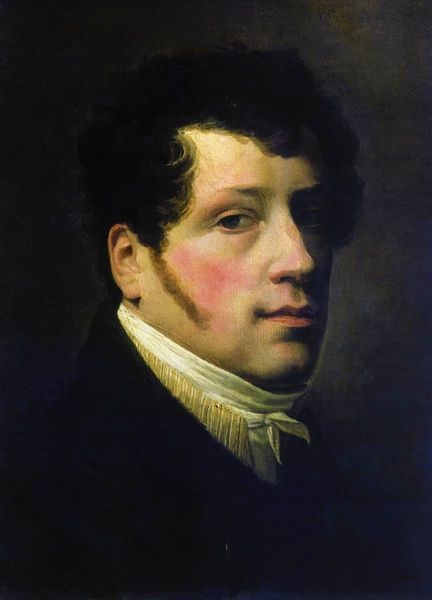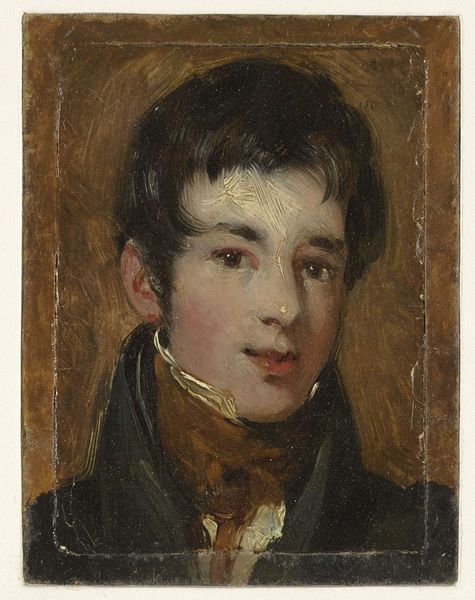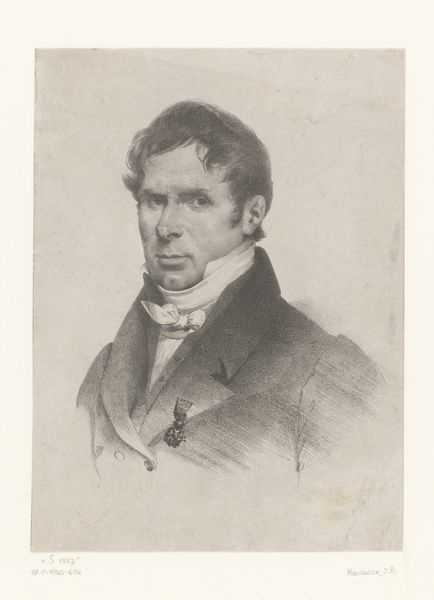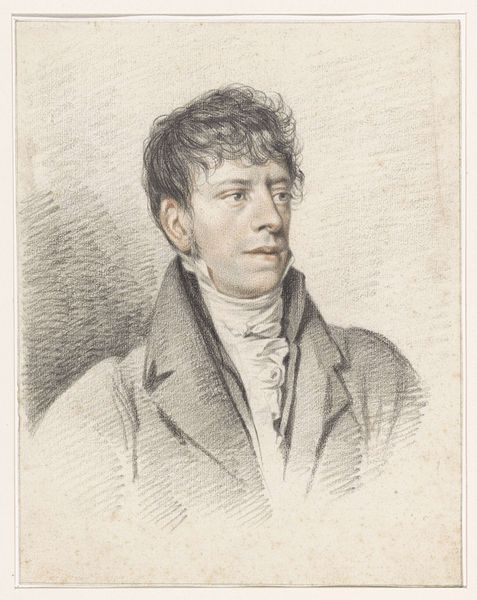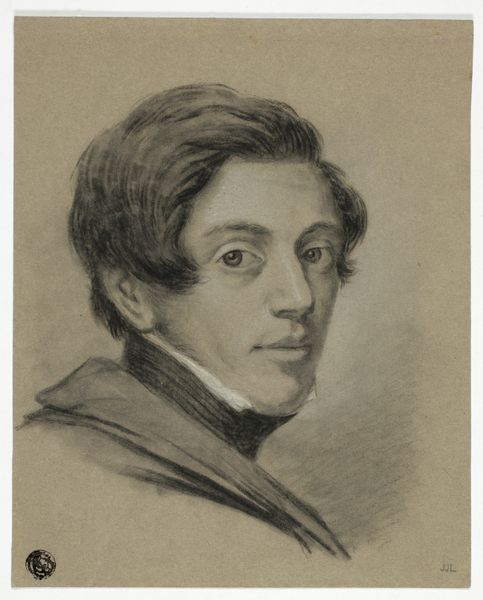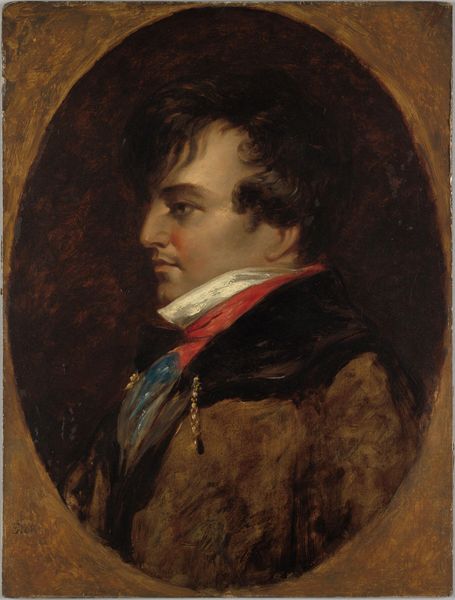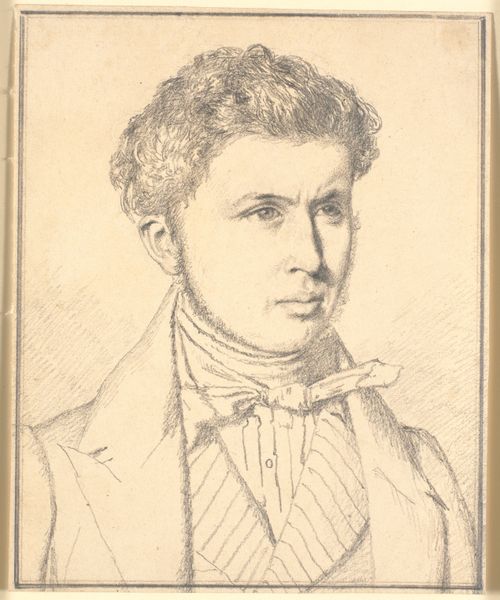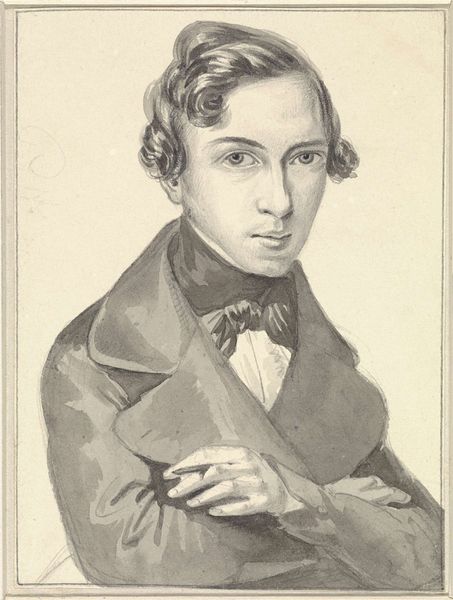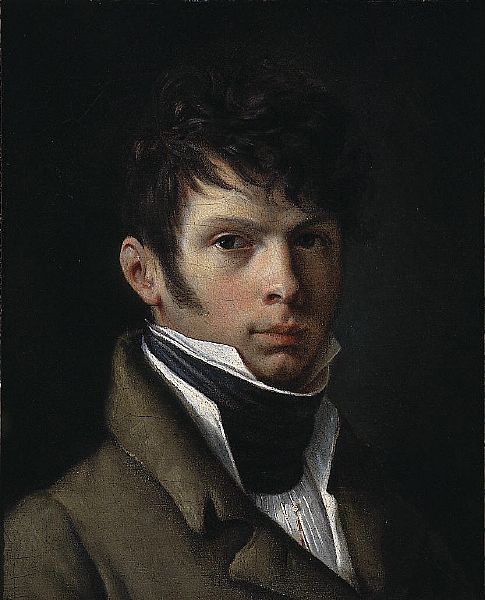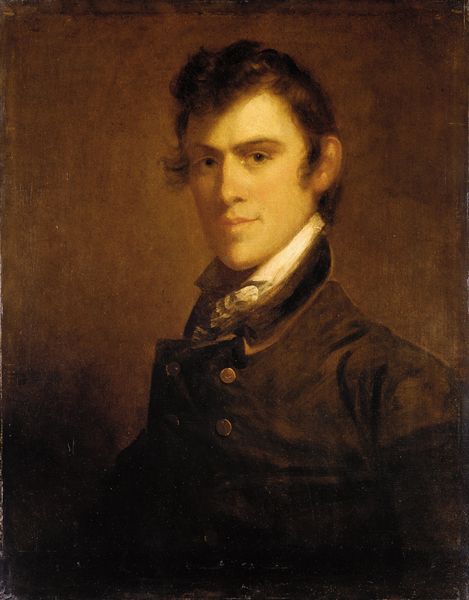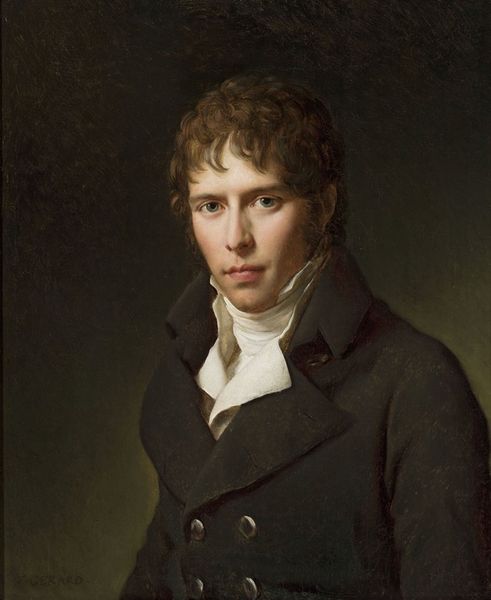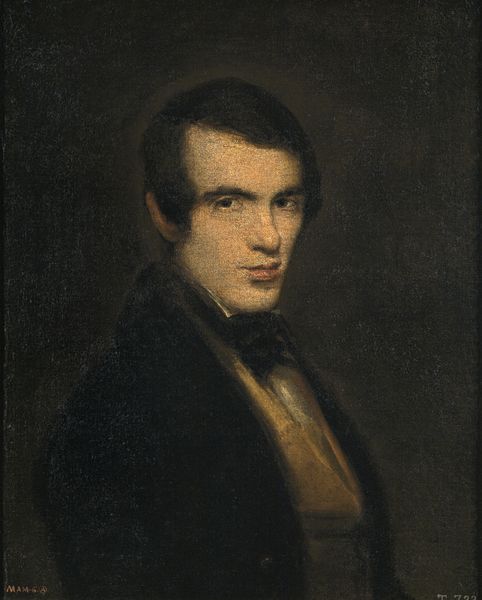
oil-paint
#
portrait
#
self-portrait
#
oil-paint
#
figuration
#
intimism
#
romanticism
#
academic-art
#
realism
Dimensions: 39 x 31 cm
Copyright: Public domain
Curator: What a face! I mean, he’s handsome, certainly, but there’s also a restlessness there, isn't there? A deep thoughtfulness behind those eyes. It makes you wonder what’s brewing in his soul. Editor: Agreed. We’re looking at "Portrait of a Young Man", an oil painting—artist: Jean-Auguste-Dominique Ingres—housed in the Musée Bonnat in Bayonne. The portrait is a striking study in romanticism, really capturing a mood of pensive introspection. But I find myself thinking about who this young man might be in the context of early 19th century France and why this type of portraiture flourished at that time. Curator: Exactly! He's got that romantic hero vibe, doesn't he? Brooding. Melancholy. You want to offer him a warm beverage and a heart-to-heart. And the muted tones... browns and creams... really draw you into that feeling. It feels so intimate. Editor: Muted, yes, but carefully rendered. Notice the detailed layering of fabrics, the light catching the crisp white collar. Ingres meticulously crafted the figure. This focus also subtly elevates this bourgeois subject matter to almost an aristocratic stature, echoing, perhaps unconsciously, the power dynamics of a society in flux. Curator: You’re right, that crispness creates a compelling contrast with the softness of his features. And what about the fact that it might be a self-portrait? Knowing that layers another dimension onto everything! Suddenly it’s not just "a young man", but Ingres himself, gazing back at us, at himself, through the lens of time. Isn’t that wild? Editor: The element of the self adds complexity to the historical reading, certainly, and shifts the focus. A young Ingres potentially immortalising himself with careful control over his presentation—a control not equally afforded to many others at the time. He uses conventions to claim and define his space and, essentially, demand attention from future viewers, like us. Curator: I love that perspective. It makes you wonder what he hoped we’d see, what story he wanted us to believe about him, all these years later. Editor: Indeed. Ultimately, a single painting is never truly isolated but embedded within the complex social structures of its time, continuing to resonate—provocatively—into our present moment. Curator: Beautifully put! It really makes you appreciate how many stories a single brushstroke can hold, doesn’t it? Editor: Absolutely. The visual impact remains long after our interpretation fades away.
Comments
No comments
Be the first to comment and join the conversation on the ultimate creative platform.
